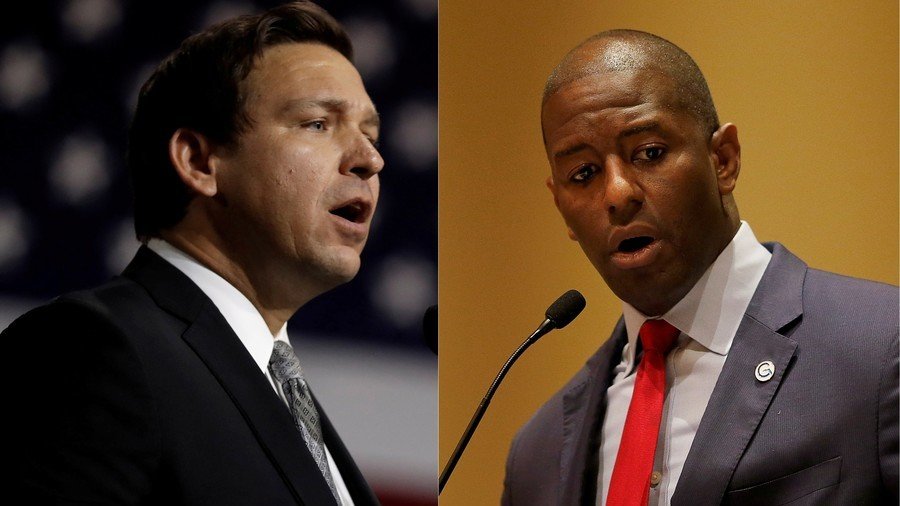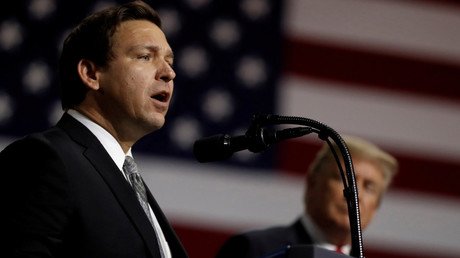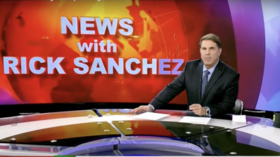Florida governor election: It’s going to be a battle of the Bernies vs. the Trumpists

In what is shaping up to be a kind of litmus test for America, a black, Bernie Sanders-endorsed progressive Democrat will face off against a hardline, Trump-endorsed Republican to win the Florida governor’s mansion in November.
The Sunshine State’s gubernatorial race is without doubt going to be one of the most interesting and consequential races to watch during the November elections across the United States.
It was supposed to be simple; an establishment Republican clashing with an establishment Democrat in your typical, not-so-interesting election race. But things changed when the primaries threw up two unexpected candidates.
Tallahassee Mayor and progressive Democrat Andrew Gillum won an upset primary victory on Tuesday, throwing a spanner in the works for anyone hoping for a business-as-usual kind of race. Gillum, who was far outspent by other candidates, had been an underdog in a crowded field of more moderate Democrats. He had been polling in fourth place with about 16 percent of the vote — and then, seemingly out of nowhere, he swept to victory on polling day with more than 34 percent of the vote.
In the Republican primary, Ron DeSantis (who currently represents Florida's 6th congressional district) handily defeated the state’s Agriculture Secretary Adam Putnam (56.5 percent to 36.5 percent), due in no small part to the fact that DeSantis had been strongly endorsed by US President Donald Trump early on. Putnam, who had raised more money, had been the establishment favorite until the Trump endorsement swung things for DeSantis.
Why is the race between Gillum and DeSantis so important? Florida is typically one of the biggest swing states in presidential elections — meaning it can go either way, Republican or Democrat. That means that this gubernatorial race will act as a sort of litmus test for Trump’s America; or put another way, it’s kind of like a Sanders vs. Trump referendum.
If it goes the Sanders way and Gillum emerges victorious, that will put a bit of a shock through the Democratic establishment which did everything it could to rig the 2016 Democratic presidential primary in Hillary Clinton’s favor, pushing her as the ‘realistic’ or ‘electable’ candidate only to see her lose to a reality TV star, while Sanders continued to poll as the most popular politician in the country — even as Clinton’s team attempted to blame him for her devastating loss.
So, could Gillum pull it off?
While Florida is a swing state, the governor’s mansion has been held by Republicans for two decades, so if there is an underdog in the race, it’s going to be Gillum. That said, there are some signs that should give his supporters hope.
Floridians broke voter turnout records in Tuesday’s Democratic primary, which signals that Gillum has been able to ignite interest among voters who perhaps would not have voted in other years. In the last Democratic primary for Florida governor, less than 850,000 turned out. This time, more than 1.4 million voted. That bodes well for Gillum. That said, more than 1.6 million showed up to vote in the Republican primary, so this is going to be a serious battle.
Explaining the discrepancy between polls and reality of the day, host of The Young Turks Cenk Uygur pointed out that polls look at “likely” voters, but it was “unlikely” voters who also showed up for Gillum — young people, progressives, minorities. If he can get them to do that in force in November, Gillum might just be able to beat DeSantis.
Gillum’s win is yet another sign that the progressive wing of the Democratic party is sensing something in the air that establishment Democrats are not. It was the same story with political newcomer Alexandria Ocasio-Cortez, who stunned the party when she beat a ten-term incumbent Democrat in the Democratic primary in New York’s 14th congressional district in June. Joe Crowley had been tipped as a future leader of the party or Speaker of the House — and just like that, a 28 year-old ‘democratic socialist’ had put a stop to his gallop, beating him by 15 points when she had been trailing by 36 points in the polls just weeks before primary day.
There’s a reason Sanders is so popular. There’s a reason he was able to start a new political movement, energizing scores of new, young, progressive voters. It was because the appetite is there among Democrats for something new. In 2016, those progressives were insisting that Clinton was too middle-of-the-road to go up against Trump. They said she represented the old guard, offered nothing new and was not going to fire voters up in the same way Sanders might — and the same way Trump ultimately did. The progressives were right, but the party still hasn’t seemed to learn lessons from it.
This is by no means to suggest that there is going to be some unexpected and overwhelming wave of progressive victories all over the country in November. One Ocasio-Cortez backed progressive was trounced in his Florida primary 86 percent to 14 percent by a more moderate Democrat. So, being a progressive, Sanders-style Democrat (for want of a better term) does not amount to some automatic winning strategy. In fact, the odds are often stacked against those candidates because a). they usually don’t enjoy much support from the party, b). they usually don’t have as much money to play with, and so c). they are less visible and taken less seriously by a media which often treats ‘different’ kinds of candidates more like amusing sideshows than real contenders, even when voters support their positions.
The real point is that if the Democratic party itself were to move collectively to the left (by fully embracing the hugely popular Medicare-for-all, for example), they would likely find most Democratic voters happily moving with them. Yet, the establishment has been quite good at using scare tactics to convince people that straddling the middle-ground and being a “moderate” is the best way to beat Republicans. No time for any of that idealistic “revolution” nonsense, they say. At first glance, this seems odd, since it was exactly that wishy-washy, fence-sitting strategy which resulted in a mortifying loss for Clinton in 2016.
But there is method to their seeming madness: Their donors. Corporate Democrats need to please the donors they take money from — and their reluctance to support policies like Medicare-for-all can be directly linked to the fact that they take money from health industry lobbyists.
As for DeSantis, he has Trump’s ringing endorsement which has gone down well with Florida Republicans. Trump has tweeted about the “very impressive” DeSantis as far back as 2012 when he was running for congress in the state’s 6th district, which could explain the Republican’s loyalty to the now-president.
Because we’re not just talking about any old Trump supporter here. DeSantis is a man who has taken sycophancy to whole new levels when it comes to Trump. In July, he released a truly bizarre campaign ad in which he called himself a “pitbull Trump defender” and was seen teaching his toddler to “build a wall” with toy bricks and reading stories from Trump’s infamous ‘Art of the Deal’ book to his young baby.
In what his critics slated as a racist dog whistle, DeSantis told Fox News this week that he hoped voters wouldn’t “monkey this up” in November by voting for Gillum, who is black. DeSantis denied he was making any racial reference, but it is that kind of comment that could anger Gillum’s base enough to come out on election day.
One stumbling block for Gillum, however, could be an FBI investigation into a pay-for-play corruption scandal involving some of his allies in Tallahassee, where he has been mayor since 2014. Though Gillum does not appear to be directly implicated so far, it is no doubt something that DeSantis’ campaign will highlight in the run up to November.
This week, Trump tweeted that Gillum would be DeSantis’ “biggest dream” as an opponent, since he was “a failed socialist mayor.” DeSantis agreed, telling NBC that Gillum is “way, way too liberal” for Florida.
The Florida gubernatorial primaries proved that the state’s conservatives are truly in Trump's camp, while the state’s liberals are happy to move into the more progressive Democratic camp.
November will reveal where voters in one of the most tightly-contested swing states stand after two years of Trump.
The statements, views and opinions expressed in this column are solely those of the author and do not necessarily represent those of RT.


















